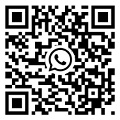Hotline
+86-136 8495 9862
Email:cennia@szmizhi.com
Add::104,Building 27,Third Industrial Zone, Longxi Community,Longgang District,Shenzhen,China.
Coil Forming & Handling Equipment
Surface Treatment Equipment
Solutions
Application
About Us

Welcome to MIZHI
For consultation/feedback, please call the service hotline: +86-136 8495 9862 Email:cennia@szmizhi.com

A used cut to length line can be an attractive option for businesses looking to enter the steel processing market or expand their existing operations while keeping costs in check. These pre owned systems, which have been previously used in manufacturing facilities, offer a more affordable alternative to purchasing brand new equipment. However, acquiring a used cut to length line requires careful consideration and evaluation to ensure that it meets the specific needs and requirements of the buyer.
One of the primary advantages of a used cut to length line is the significant cost savings. New cut to length lines can be extremely expensive, with prices often running into hundreds of thousands or even millions of dollars, depending on their complexity and capabilities. In contrast, used lines can be purchased at a fraction of the cost of new ones. This makes them accessible to small and medium sized enterprises that may not have the capital to invest in new, state of the art equipment. Additionally, the lower upfront cost of a used line can result in a quicker return on investment, especially if the line is in good working condition and can be integrated into existing production processes with minimal modification.
When considering a used cut to length line, it is essential to thoroughly assess its condition. This includes inspecting the mechanical components, such as the uncoiler, leveling rollers, cutting mechanism, and stacking system, for signs of wear and tear. Worn out parts may require immediate replacement or frequent maintenance, which can add to the overall cost of ownership. Electrical and control systems also need to be carefully evaluated. Older lines may use outdated control technology, which could limit their functionality, make them more difficult to operate, or pose compatibility issues with modern production management systems. However, in some cases, these systems can be upgraded or retrofitted to improve performance.
The production history of the used cut to length line is another crucial factor. Knowing how many hours the line has been in operation, the types of materials it has processed, and the production volumes it has handled can provide valuable insights into its remaining useful life. A line that has been used for heavy duty applications or has accumulated a high number of operating hours may have more internal wear and may require more frequent and costly maintenance. On the other hand, a line that has been lightly used and well maintained may offer many more years of reliable service.
Buyers should also consider the availability of spare parts for the used cut to length line. Older or less common models may be difficult to source parts for, which can lead to extended downtime in the event of a breakdown. It is advisable to research the availability of spare parts before purchasing and, if possible, to buy a line from a manufacturer with a good reputation for providing long term support and a wide range of spare parts.
Furthermore, it can be beneficial to have the used cut to length line inspected by a qualified technician or engineer before finalizing the purchase. They can identify any hidden issues or potential problems that may not be apparent during a casual inspection. This independent assessment can help the buyer make an informed decision and negotiate a fair price based on the line's actual condition and value.